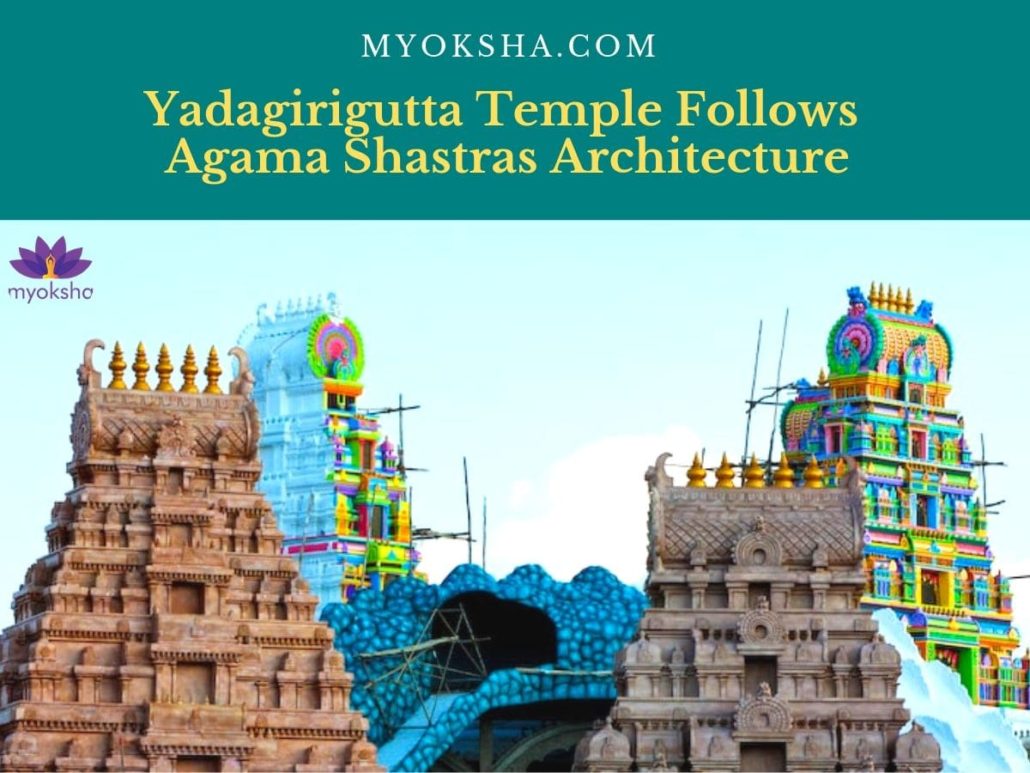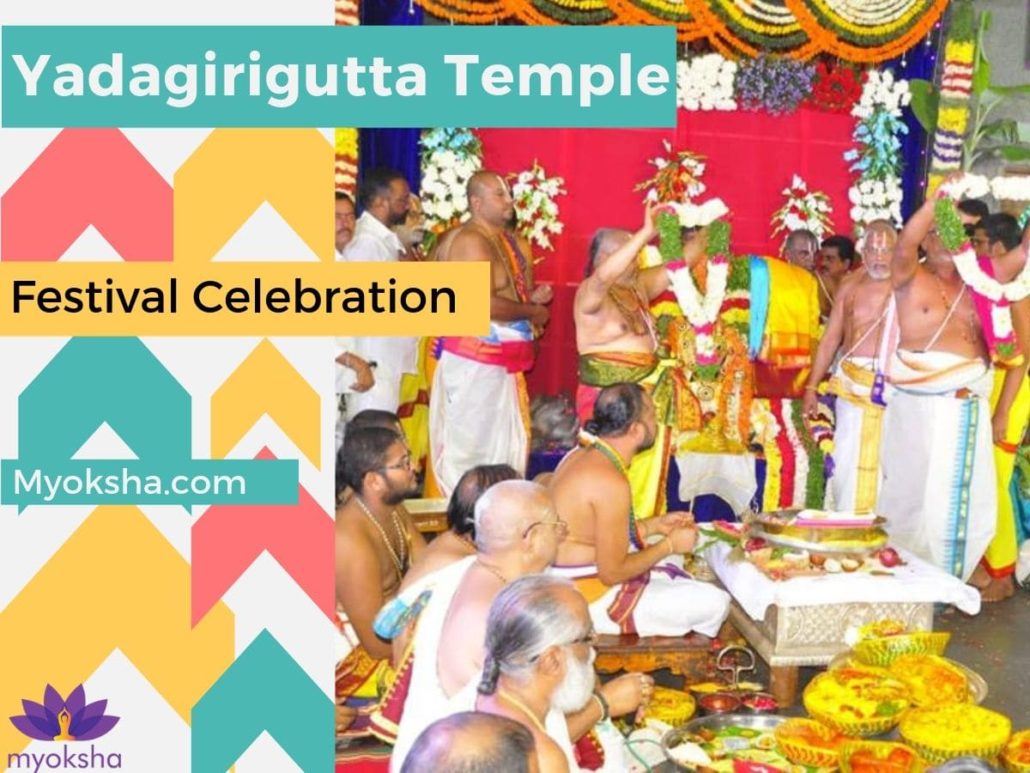Lepakshi Temple is a dedication to the cult deity Veerabhadra. The temple is based in the small village of Lepakshi in the Anantapur District of Andhra Pradesh. The construction of the temple took place in the 16th century during the reign of Vijayanagara Kings.
Lepakshi Temple has three shrines dedicated to the Hindu Gods Shiva, Vishnu and Veerabhadra. There exist about 70 pillars at this fabulous 16th-century stone structure of Vijayanagar style architecture.
This temple houses the largest sculpture of the demon king Veerabhadra. Moreover, much of the temple stands on a low rocky hill called Kurmasailam. The word ‘Kurmasailam‘ translates to tortoise hill in the Telugu language.
One of the pillars n Lepakshi Temple is popular as the Aakaasa Sthambha (Hanging Column). This pillar does not rest on the ground fully. During the British era, a British engineer’s labour in trying to move it were in vain. However, doing so made the pillar dislodge from its original position.

Besides the Hanging pillar, the other thing that is worth seeing is the spectacular Nandi which is located almost a mile before the main temple. It is 27 ft in length and 15 ft in height which is reputedly India’s biggest monolithic Nandi.
Facts About Lepakshi Temple
| Opening and Closing Timings | 6:00 am – 6:00 pm |
| Entry Fee | No fee |
| Main Deity | Veerbhadra |
| Nearest Airport | Sri Sathya Sai Airport |
| Location | Anantapur district, Andhra Pradesh |
| Photography | Allowed |
Lepakshi Temple Timings
Devotees can visit the temple for darshan in the following timings –
| Timings | From |
| Morning | 6:00 AM |
| Evening | 6:00 PM |
The temple opens all days of the week. However, timings may change during festivals, important rituals and eclipses.
Significance of Lepakshi Temple
- Lepakshi Temple has three separate Mandapas. The first one is Mukhya Mandapa (or Natya or Ranga Mandapa). The second one is Artha Mandapa and Garba Griha and third is Kalyana Mandapa. The last Mandapa is unfinished.
- Devotees worship Veerbhadra who is Shiva’s depiction in his ferocious mood. Warrior God Veerbhadra was worshipped during wartimes in the ancient and medieval periods.
- A huge Ganesha is there in the temple’s outer enclosure. And it leans against the rock which is perpendicular to a massive Naga with three coils and seven hoods. This Nagalinga is the largest in India.
- Goddess Sita’s footprint is there in the temple premises. Beliefs say that the footprint got imprinted on the floor during the time Ravana was taking Sita to Lanka.

Poojas and Rituals performed at the Lepakshi Temple
| Abhishek Timings | From |
| Morning | 7:00 AM – 7:30 AM |
At first, the puja of the Shivalinga takes place. Henceforth Lord Veerabhadra is worshipped. In the morning, the lord appears in Bala rupa (youth). And turns to a hero in a moustache by the evening.
Devotees perform Abhishek to Lord and Mother and offer clothes. Offerings in form of the sweet pudding – Sarkarai Pongal Nivedhana is also made. As in Lord Vishnu temples, here too Sadari blessing with the lotus feet of the Lord is offered to devotees. Betel leaf is given as prasad in the temple.
Lepakshi Temple History
The history of Lepakshi Temple dates back to 1530-40. The Virupanna and Viranna brothers did the construction of the temple. The two brothers were in the service of Vijayanagar Kings. At that time Vijayanagar was King Achutarya’s kingdom.
But according to the Puranic story, Lepakshi Temple was built by the sage Agastya. Moreover, Skanda Purana states that this temple is one of the important pilgrimage sites of Lord Shiva known as divyakshetras.
Legends associated with Lepakshi Temple
- The origin of Verbhadra is an interesting mythological tale. According to the tale, it was Sati’s suicide that enraged Shiva to cut off a lock of his hair. And from this lock of his hair, Demon God Veerbhadra and Goddess Kali were born.
- Virupanna constructed the Lepakshi temple using the resources from the state treasury. After knowing this, King Achutarya got angry with him and decided to punish Virupanna. Hence, he ordered to blind Virupanna. And on hearing this Virupanna blinded himself there and then.
- The temple has different panels of paintings depicting different stories. One of the panels narrates the tale of Shiva’s marriage. Parvati is shown seated on the raised seat alongside six maidens.
- The paintings of this temple were first noticed by A H Longhurstin 1912-13 but lack of attention and leakage resulted in deterioration of these artforms.
- Rumours are that a lot was later done to the temple during Vijayanagar reigns. However, there are no significant records for it. But we do have a lot of other temples built around the shrine of Veerbhadra.
- Also, the presence of the Uddana Veerabhadra Temple in Hampi provides evidence that claims that during Vijayanagar days the people of Hampi worshipped the Gods in their ferocious forms as well. In fact, the ruins of Hampi points towards the existence of this cult.
Rules to follow in Lepakshi Temple
- While visiting the Lepakshi temple, do not forget to wear decent clothes. And do not carry leather bags or belts, etc. However, temple authorities permit photography inside this temple so one must carry their camera.
- Moreover, one should choose to wear a traditional piece of clothing to the temple. Temple authorities prohibit clothing items like jeans, t-shirts, shorts and skirts etc in the temple premises.
Festivals celebrated at Lepakshi Temple
- The month of February calls for a 10 day-long celebration in the premises of Lepakshi temple. This festival also includes the car festival. During the festival, pilgrims flock in huge numbers to the temple.
- Mahashivratri– On this occasion dedicated to Lord Shiva, the temple organises a huge fair. The fair invites traders of sweetmeats, clothes, bangles, toys and bamboo articles. Also, the trading of domestic animals like goats, cows etc take place in the temple fair. Moreover, a lot of villagers arrive on this day to redeem their vows.
- Durgamma Festival– This is a four-day-long festival that falls in the Bhadrapada month of Hindu Calendar. On this day devotees draw water from Majira river for worshipping. Moreover, a lot of other sacrifices also take place during the time. Temple authorities organise a fair on this day.
- Masi Brahmmotsavam falling in the months of February-March and Tirukarthikai falling in November-December are some of the other festivals that call for celebration in the Lepakshi temple.
How to reach Lepakshi Temple – Road, Rail and Air
- Train– Hindupur railway station is the nearest railways station to Lepakshi. It is located about 12 km away from the temple.
- Road– Lepakshi has good road connectivity via Hindupur. Many private and government buses connect Hindupur to the rest of India. Also, one can hire a taxi service to reach their destination.
- Air– Sri Sathya Sai Airport, Puttaparthi, Andhra Pradesh is the nearest to the temple. It is 58 km away from the Lepakshi temple.
Hotels near Lepakshi Temple – Where to stay
Lepakshi temple does not have any guesthouse available. However, there are some good hotels nearby it –
- AP Tourism Hotel near Nandi– This place is very affordable. Also, this hotel accepts bookings one day in advance too. Moreover, one must carry a confirmation voucher of the same along with a valid ID proof.
- Hotel Bheema– This place is another stay near the temple. It is a blend of all the modern amenities and is very budget-friendly.
- SRS Regency Hotel– This hotel is a complete divinity for the travellers. One can have all the modern amenities here. This place is also quite near to the temple and is pocket-friendly.
Where to eat?
There are several hotels around the temple that offer tasty and mouth-watering dishes. The South Indian food prepared here has an unbeatable taste. Tourists can get both vegetarian and non-vegetarian food near the temple. Other cuisines one can find here include North Indian and other modern varieties. The nearby restaurants that are worth visiting include Annapoorna and Ghuma Ghumalu Restaurant.
Nearby Temples
- Lepakshi Nandi: There is a monolithic sculpture of Shiva’s bull Nandi on the main road of Lepakshi which is approximately 550 m from the temple. The sculpture faces the shiva linga that a large serpent is shielding.
- Sri Veerabhadra Swamy Temple: Sri Veerabhadra Swamy came to life with an aim to demolish Dakshyagna. After doing so, Dakshyagna was redone successfully. However, even after the completion of yagna, Sri Veerabhadra Swamy lived in anger and was burning in fire caused by the Yoga Sakthi of Sati. Hence, other saints and devotees of Veerbhadra Swamy went to Vaikunta to request Lord Vishnu to pacify Veera Bhadra Swamy. This temple is 48 Km from Kadapa.
- Bayalu Veerabhadra Swamy: Bayalu Veerabhadra Swami Temple idol is there is a temple facing north. Beliefs say that it guards the Lord Mallikarjuna Swami. He is the kshetrapalaka of Srisailam. He has no roof above him. Hence, it goes by the name Bayalu Veerabhadra Swamy.
- Sri Bhadrakali Sametha Veereswara Swamy Devasthanam: In this temple, the Goddess Bhadrakali is present on the same platform, in order to pacify Veerabhadra Swamy. Pujaris perform Nithyakalyanam here to Veereswara Swamy and Sri Bhadrakali.
- Sri Agora Veerabhadra Swamy Temple: A goat’s head was put on Dhakshan after Sri Veerabhadra cut his off. Beliefs are that Dhakshan lost to Sri Veerabhadra at this place. Sri Veerabhadra faces north, holding many weapons. Goddess Kaali is present just outside the sanctum, facing east. This temple attracts lots of devotees during new moon days and full moon days. Beliefs are that it cures people with mental illness.
If you have any questions about Lepakshi Temple, please leave a comment below, and we will get back to you within one hour.









